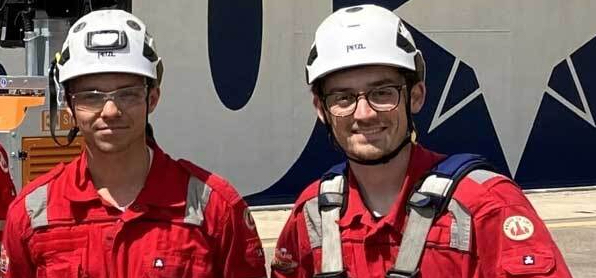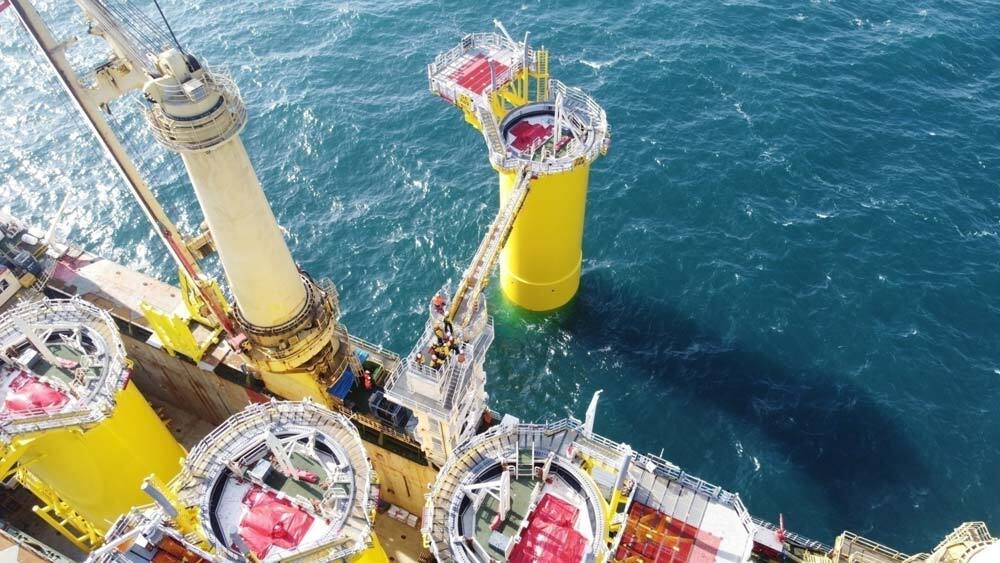NEWS
Out of office, going offshore with Marine Engineers Bas & Martijn
Installing transition pieces on the North Sea
At Jumbo Maritime, we have a versatile fleet of multi-functional heavy lift crane vessels to service the global offshore energy industry. The vessel ‘Fairplayer’ has a portfolio of numerous projects, and this year’s summer campaign marked the installation of transition pieces (TP’s) for the British Doggerbank wind farm. Onboard, the project is not only performed by the vessel crew. Office engineers also get a chance to go onboard and do their part. Marine engineers Bas Milatz and Martijn Witvoet will give you an insight into what it’s like to work as a beginning engineer onboard the Fairplayer.
As a marine engineer, you’re tasked with doing calculations regarding ship motions and structures. This includes calculating the ship stability, expected days of waiting on weather, and the dynamic loads. The results support the decision making during the project preparations and execution.
Onboard, the field engineer is the link between the Jumbo offshore crew and the client. As the projects can be unpredictable, changes to the engineered plan are often needed along the way. You are not only responsible for updating this procedure, but also for making sure it is followed by the rest of the crew. Therefore, it is vital to participate in the project works and assist the crew wherever possible.

Marine engineers Bas Milatz and Martijn Witvoet
Bas: “Going offshore really helps you understand the challenges the crew face during the execution of a project. On board you see your own preparations being used, discussed, and get the chance to learn from it. One of the things I enjoy most is that you’re really part of the offshore crew, the responsibility that comes with it and the synergy required in the team. I experienced this firsthand during the Doggerbank project. During the first installation it was cold, raining and there were strong winds. We faced many challenges, both operational and technical, and I sometimes wondered if we would be able to finish the installation at all. Looking back, you could really see the process we went through that night, and the improvements with the next installations.
Martijn: “On board, I joined the crew to assist in numerous installation procedures, ranging from operating bolting equipment to being up close with the lifting of the TP’s. Seeing the crew work together in efficient and creative ways taught me a lot about the practical side of offshore. Interesting discussions happened between the office and crew, a valuable experience when you have a theoretical background. I learned that good solutions are found when you get input from a variety of perspectives, and that your ideas on paper can turn out differently in practice. For instance, at the office I worked on structural seafastening designs. Seeing the crew work with these structures in real life gave me a good view on what can be improved. I definitely take those lessons with me to improve my work.”
Interested in your opportunities at Jumbo? Visit our vacancies.

The crew getting ready to enter the TP.